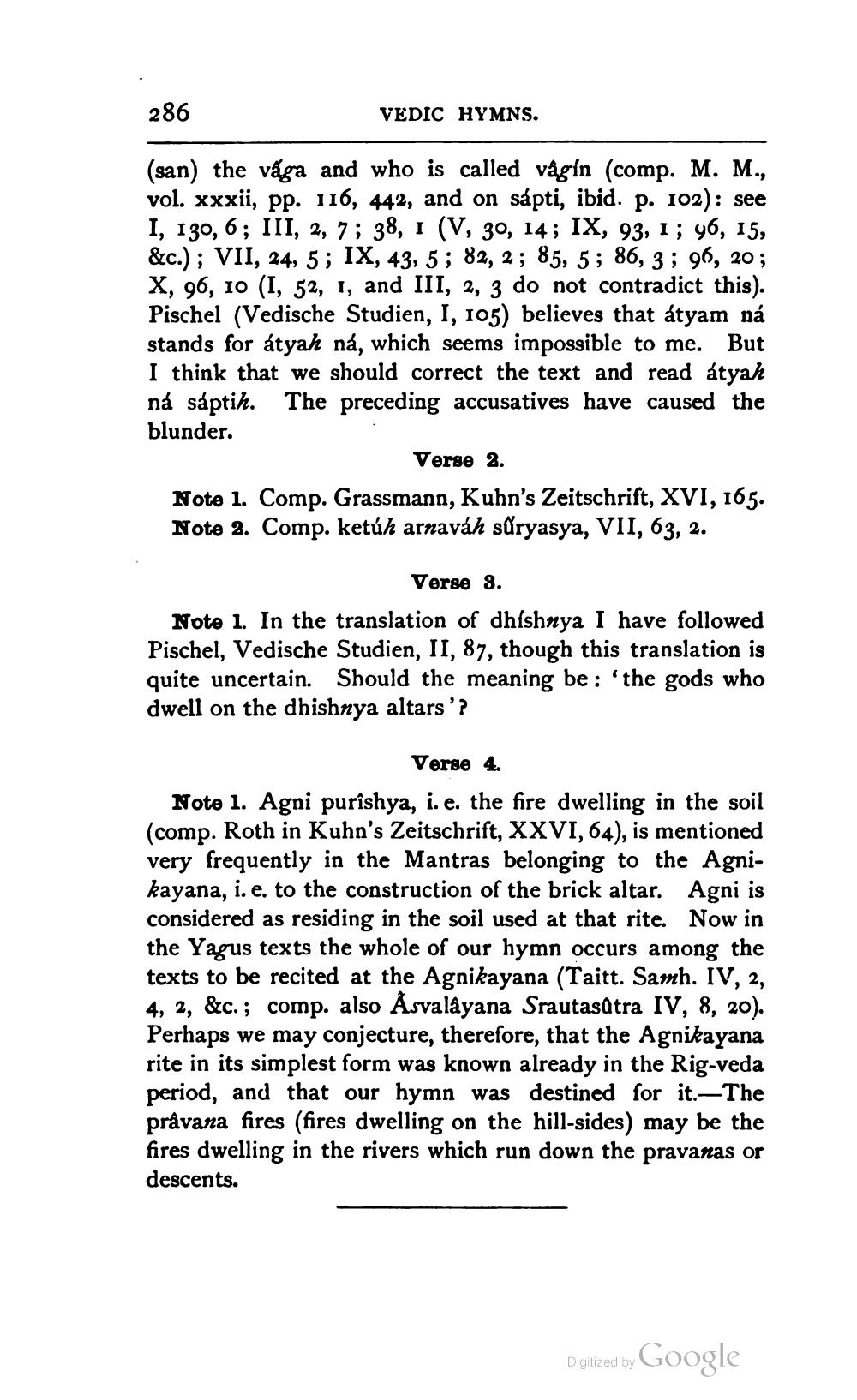________________
286
(san) the vaga and who is called vâgín (comp. M. M., vol. xxxii, pp. 116, 442, and on sápti, ibid. p. 102): see I, 130, 6; III, 2, 7; 38, 1 (V, 30, 14; IX, 93, 1; 96, 15, &c.); VII, 24, 5; IX, 43, 5; 82, 2; 85, 5; 86, 3; 96, 20; X, 96, 10 (I, 52, 1, and III, 2, 3 do not contradict this). Pischel (Vedische Studien, I, 105) believes that átyam ná stands for átyah ná, which seems impossible to me. But I think that we should correct the text and read átyah ná sáptih. The preceding accusatives have caused the blunder.
VEDIC HYMNS.
Verse 2.
Note 1. Comp. Grassmann, Kuhn's Zeitschrift, XVI, 165. Note 2. Comp. ketúh arnaváh suryasya, VII, 63, 2.
Verse 3.
Note 1. In the translation of dhíshnya I have followed Pischel, Vedische Studien, II, 87, though this translation is quite uncertain. Should the meaning be: 'the gods who dwell on the dhishnya altars'?
Verse 4.
Note 1. Agni purîshya, i. e. the fire dwelling in the soil (comp. Roth in Kuhn's Zeitschrift, XXVI, 64), is mentioned very frequently in the Mantras belonging to the Agnikayana, i. e. to the construction of the brick altar. Agni is considered as residing in the soil used at that rite. Now in the Yagus texts the whole of our hymn occurs among the texts to be recited at the Agnikayana (Taitt. Samh. IV, 2, 4, 2, &c.; comp. also Asvalâyana Srautasûtra IV, 8, 20). Perhaps we may conjecture, therefore, that the Agnikayana rite in its simplest form was known already in the Rig-veda period, and that our hymn was destined for it. The prâvana fires (fires dwelling on the hill-sides) may be the fires dwelling in the rivers which run down the pravanas or descents.
Digitized by
Google




